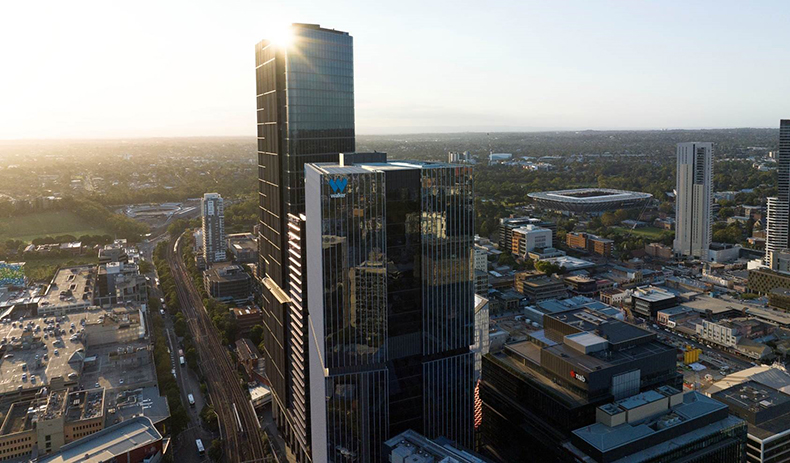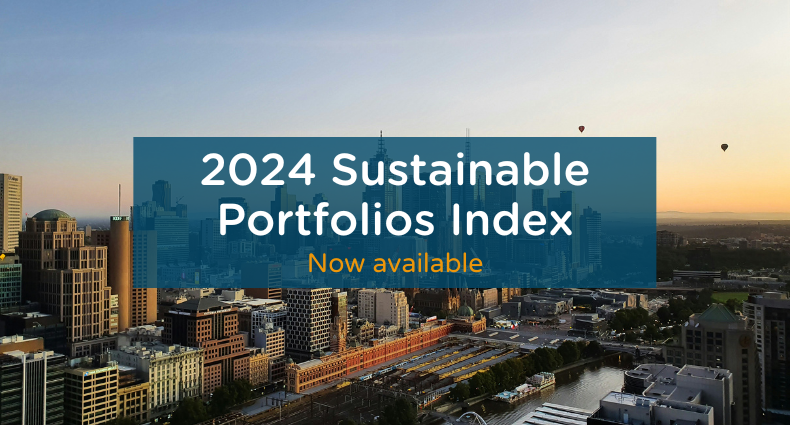Accountability and climate action: NABERS Sustainable Portfolios Index 2024 confirms top performers
Sixty property portfolios and 133 Victorian public hospitals have participated in the 2024 NABERS Sustainable Portfolio Index (SPI).
Now in its sixth year, the NABERS SPI ranks portfolios of building assets according to their NABERS ratings for energy efficiency, water efficiency, waste management and indoor environment quality.
“NABERS tells a powerful story of accountability and commitment to climate action in Australia,” says NABERS Executive Director Carlos Flores.
“The NABERS SPI is Australia’s only publicly available source of information on the sustainability performance of office and shopping centre portfolios, and now for the first time, hospitals.
“We know data is the cornerstone of sound decision-making. We love to see so many investors, financial institutions and governments using the NABERS SPI to compare the performance of their portfolios against their peers, and to make decisions that are better for the environment.”
NABERS, the National Australian Built Environment Rating System, was established in 1999. Buildings rated with NABERS have collectively slashed an estimated $1.7 billion in energy consumption and saved more than 11.5 million tonnes of carbon emissions over the life of the program.
Victorian hospitals enter the SPI for the first time
The standout story of 2024 is the inclusion of Victoria’s public hospitals in the SPI for the first time.
The Victorian Health Building Authority (VHBA) has rated the energy and water efficiency of 133 public hospitals, representing approximately 2.9 million sqm of area and approximately 6.5 million occupied bed-days.
VHBA’s overall portfolio result for the 133 hospitals disclosed on the SPI Public Hospitals Energy Index is 4.1 stars. This represents ‘high performance’. The portfolio achieved an average 3.9 stars in the Public Hospitals Water Index. Thirteen hospitals achieved 6 star ‘market leading’ Water ratings.
VHBA’s NABERS ratings set benchmarks for environmental performance and provide an incentive for public hospitals to improve performance over time, says Tiernan Humphrys, the Victorian Health Building Authority’s Senior Technical Specialist for Environmental Sustainability.
“Public hospitals are already transparent about a range of performance metrics, from patient treatment time to ambulance response time. We think there are benefits of being transparent about the environmental performance of our hospitals too.”
Hospitals often have multiple buildings within the one footprint, Tiernan notes. In VHBA’s case, this amounted to 262 ‘rated assets’. “We had to collect data from close to 1,000 energy and water meters. While this took time and effort, the benefits of publicly disclosing our ratings make it worthwhile.”
“Victorian public hospitals spend around $170 million on energy and water each year. Every percentage improvement could deliver $1.7 million in savings and free up funding for service delivery,” Tiernan adds.
Top performers shine
In 2024, the SPI Office Energy Index includes 417 assets, representing close to 7.4 million sqm of area or 24% of the total national office market. Walker Corporation’s Parramatta Square achieved the highest result of 5.8 stars.
“Walker is extremely proud to have the highest rank in the NABERS SPI in 2024. Parramatta Square reflects an ongoing commitment from Walker to create environmentally and socially sustainable solutions backed by innovative green technology for the long-term benefit of the city, community, and the thousands of workers commuting here every day,” says Walker Head of Sustainability & Engineering - Investment Assets, Cameron Forbes.

Parramatta Square, developed by Walker Corporation
The SPI Office Water Index disclosed ratings for 399 assets, equating to approximately 7.2 sqm area, or 23% of the total national office market.
Lendlease’s Barangaroo International Towers received the highest result for Office Water (6 stars), as well as for Indoor Environment (5.9 stars).
Cbus Property topped the SPI Office Waste Index, with 4.4 stars. This is the third consecutive year that Cbus Property has led the market in Waste, improving by 0.3 stars each year.
The Office Waste Index grew by 25% with the introduction of three new portfolios, two owned by EG, and one by Rest Super.
Four new portfolios owned by Walker Corporation, Rest Super and Frasers Property were added to the Office Indoor Environment Index, bolstering participation by 10%.
Active Super and Cbus Property led the Shopping Centre Energy Index with 5.1 stars apiece. The number of shopping funds disclosing their ratings fell to 16, down from 18 in 2023, due to market consolidation.
Three portfolios owned by Active Super and Cbus Property achieved 100% carbon neutral status.
NABERS continues to strengthen the SPI Index in close consultation with participants, and this year has enhanced the online dashboard to improve the user experience.
“The world-leading transparency that SPI participants exhibit is exactly what we need to combat greenwashing,” Carlos Flores concludes.
“Participating organisations are so committed to making a difference to the environment, they are willing to disclose their sustainability performance side-by-side against their competitors every year. This kind of leadership sets the Australian building sector apart from other countries, and represents a strength we can leverage to help Australia meet its climate obligations.”
See the full 2024 NABERS Sustainable Portfolios Index here.

